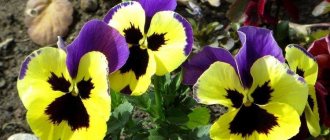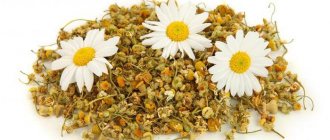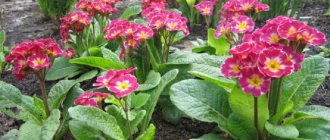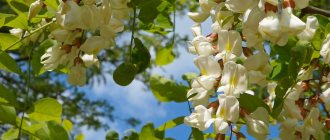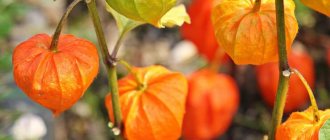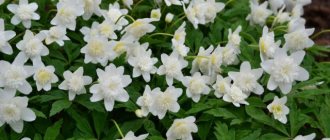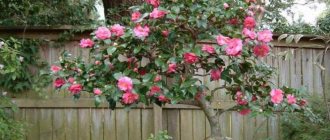Charming pansies rarely leave anyone indifferent. Today it is a flower actively cultivated to decorate flower beds in summer cottages and city parks. The ancestor of the Viola genus, which includes pansy flowers, is considered a small wild field plant.
Domesticated varieties, of which there are more than 250, are larger - reaching a height of up to 30 cm. Large bright flowers invariably attract attention. The plant does not require complex care.
There are annual, biennial, and perennial pansy flowers. A variety of colors allows you to create a flower bed to suit every taste.
general information
Pansies came to us from Europe, and spread throughout the globe from Asia to the Western part of our continent. Viola belongs to the violet family. These plants have a rod shape, and their stem reaches a height of up to 35 cm. Viola buds are usually single.
In the wild, flowers grow like weeds and do not add any aesthetics or beauty to the place where they grow.
Surprisingly, some species of these plants are able to bloom even in cold climates.
Choosing a place for a flower
It is important to choose the right place for planting. This culture does not tolerate excess direct sunlight and dense shade. Therefore, it is necessary to select places for it with diffused sunlight or slightly shaded.
All Viola varieties prefer fertilized light soil and moderate watering. In very humid places, the plant withers and gets sick.
Description and features
Pansies are called tricolor viola, popularly Ivan da Marya. They belong to the violet family. Plants exist as annuals, biennials and perennials.
Flowers are divided into spring and summer blooming. This is probably their uniqueness: any variety is suitable for choosing the flowering time.
It all depends on the landing time. The root is a brownish rod in the form of a rod with small branches. The stem extends from 10 to 30 cm. The inside is hollow, triangular, erect or branched. Single buds with five petals sit on triangular peduncles with two bracts near the flower.
Flower petals differ in size. Two of them are larger than the others. The color of the petals has a different range of shades, even black. There are spots in the center of the bud, and a picture emerges, like a muzzle.
The poetic name of the pansy has given rise to many legends. Many countries and even regions have their own answers about why pansies are called:
According to an ancient legend, the flower got its name in honor of the girl Anyuta, who could not stand the separation and injustice towards herself and died.
And it all started like in a fairy tale, the guy fell in love with the girl, she reciprocated. The seducer simply disappeared forever.
After her death, flowers with different colors stretched out on the grave, as if betraying her feelings: hope, resentment, sadness.
The Romans say that men spying on the goddess of love were turned into flowers with eyes.
In Russia, according to legend, a girl and a guy loved each other. Their parents separated them and married the guy to a rich girl. Anya died of melancholy.
Another legend, a girl, not getting a guy, died of melancholy. Flowers grew on the edge of the road, as if they continued to wait for their loved one.
Poetry
And a flock of pansies
Velvety keeps the silhouette -
These are butterflies flying away
They left their portrait...
Anna Andreevna Akhmatova wrote such poems about charming flowers . Undoubtedly, the poetess admired them.
The great Goethe also idolized violets . Every spring, the German poet enthusiastically sowed them in the vicinity of Weimar. To this day, these flowers are called Goethe’s flowers there.
Characteristics of species
All varieties of violas are conventionally divided into two main groups, since the remaining species are approximately between them.
- First group: with large flowers (diameter 10 cm)
- Second group: with small flowers (diameter no more than 6 cm)
Small-flowered Large-flowered
Most gardeners are of the opinion that the larger the size of the flower itself, the better. But this is an erroneous judgment.
As practice shows, plants with small flowers turn out to be much hardier than their fellow species.
Small-flowered crops are more adapted for cultivation in the most unpleasant climatic and weather conditions, as they easily tolerate temperature changes, as well as sudden changes in conditions when rainfall suddenly turns into heat and drought.
Also, in defense of small-flowered violets, I would like to note that a dense carpet of such flowers turns out to be even more colorful and bright than when plants with large flowers are planted.
Despite the fact that violas with small flowers have become very popular in the north, gardeners from the southern regions have become very fond of them.
It is worth noting that in hot climates, pansy flowers begin to gradually decrease in size. As a result, by the end of the southern season they become even smaller.
For this reason, small-flowered violas in the south are grown mainly on balconies, and larger varieties are planted in flower beds.
Division by size:
- short;
- medium height;
- tall.
Tall
Low-growing
Depending on the edge of the petals:
- with even petals;
- with a wavy edge.
Smooth petals
Wavy petals
The color palette distinguishes:
- with monochrome coloring;
- two-color;
- with contour blots and stripes.
8.Home care
Pansies are widely used not only in flower beds and flower beds, but are also often grown as a balcony plant or decorate window sills in houses.
To plant a flower, prepare small flower pots with drainage holes in the bottom. The first layer is expanded clay or broken brick - such materials will help quickly remove moisture from the root system after watering.
Fill the pots with nutritious and loose flower soil mixed with river sand, perlite or vermiculite. Make a hole in the center of the pot and place the bush in it along with the root ball. The perimeter of the plant is sprinkled with soil and compacted a little. The plants are watered and, if necessary, a little more soil mixture is added.
Select a location for the flower where it will receive 3 - 4 hours of direct sunlight per day - an eastern or western window sill will do. Do not expose plants to direct sunlight during the daytime.
↑ Up,
The air temperature in the room can be 18 - 22 degrees. This flower does not like intense heat and reacts to it extremely negatively. The plant's leaves begin to turn yellow and fall off, and rare small buds form. Increased air humidity and fairly frequent watering can help to some extent. If the bushes look really bad, then they are cut off, leaving 5 - 6 cm of growth and several leaf blades.
Two to three times a month, the flower pot is turned a quarter turn around its own axis so that the plant does not stretch towards the light source and remains symmetrical.
In the autumn-winter period, when the bushes experience an acute lack of sunlight, it is worth using artificial additional lighting using phyto lamps, LED or fluorescent lamps. The duration of daylight for normal flower development should be 12 - 14 hours.
↑ Up,
Water the plants with well-settled water at room temperature until excess moisture appears in the pan. The soil in the pot should be completely wet; excess water should be drained from the pan a few minutes after watering. Between waterings, dry the surface of the soil in the pot a little - about 1 cm deep.
For abundant and long-lasting flowering, it is very important to carry out timely watering and fertilizing of the flower. Plants in pots have an extremely limited feeding area and need to be fertilized 2-3 times a month.
Feed pansies at home with mineral fertilizers for flowering plants. Fertilizers are applied directly to the moist substrate after watering.
↑ Up,
You should not place pots with pansies in rooms with insufficient air movement - such plants slow down their development and become loose and elongated. There should be constant air movement in the room where the flower is located.
Plants require sanitary cutting, which can be done with ordinary sharp and sterilized scissors. During this pruning, old, yellow leaves are removed, cutting them off at the base along with the petioles. It is also necessary to get rid of fading buds, preventing the formation of seeds. Pinching the buds this way will stimulate the plants to form new flowers.
Biennial plants are grown at home until they bloom and then thrown away. Perennial bushes should be given a cool dormant period in winter and transplanted into a new, fresh substrate in the spring.
↑ Up,
Types of pansies
The pansy flower has several varieties. All of them differ from each other in color and type of inflorescences. Also, their habitat is different, since each species is adapted to certain conditions. Let's look at the most common types of pansies.
Viola tricolor
So named because of the tricolor color of the flowers. Mostly there are combinations of white, yellow and purple colors. Grown as an outdoor plant, it is a bush 20 cm high. The flowering time of the tricolor viola is in April. By the end of the season, the bush falls off and thins out. This species lives no more than two years. It can be used for medicinal purposes, such as making a decoction of the leaves.
Viola yellow
This is a very miniature flower, since on average it grows 10-12 cm in height. The inflorescences are yellow and large in diameter, reaching about 5 cm. The uniqueness of this species is that it is able to withstand severe frosts, down to 30 degrees Celsius below zero . Yellow viola actively blooms in May and blooms for 2-3 months. In Russia, this type is rarely bred at home, since it requires very careful care.
Fragrant violet
The most common type of pansy. It grows longer than other varieties and reaches a height of 14-15 cm. The flower is unpretentious in care, but does not tolerate frost, so it can exist well all year round only at home. The inflorescences are small, but at the same time they emit a very bright and pleasant aroma. The fragrant violet blooms mainly in the spring; with good care it can bloom a second time. Petals of this type can also be used as a medicine: a decoction of them helps to cure a number of chronic diseases.
Lunar calendar for planting violets for 2022
It is known that the moon affects the condition of the human body. Plants also sense the satellite's movements intensely. Since ancient times, people have noticed that planting crops on certain lunar days gives better yields.
Today, a gardener's calendar helps to grow healthy and beautiful plants at a lower cost. Favorable days are used for planting; on unfavorable days, care and feeding procedures are carried out.
| Month | Favorable | Unfavorable | |
| Annuals | Perennial | ||
| January | 17-19; 23-27. | 14-19; 23-27. | 5; 6; 21. |
| February | 6-8; 11-17; 21-25. | 11-13; 20-25. | 4; 5; 19. |
| March | 12-17; 19-20. | 12-17; 19; 20; 27-30. | 6; 7; 21. |
| April | 6-8; 11-13; 15-17; 29-30. | 6-8; 11-13; 15-17; 24-26; 29, 30 | 5; 19. |
| May | 8-17; 21-23; 26-28. | 6-8; 10-17; 21-23; 26-28; 31 | 5; 19. |
| June | 1; 2; 5; 6; 9-13; 16-20. | 1; 2; 5; 6; 9-13; 16-20, 27-30. | 3; 4; 17. |
| July | 8-10. | 8-12; 25-31. | 2; 3; 17. |
| August | — | 2-6; 17; 18; 21-23; 26-28. | 15; 16; 30; 31. |
| September | — | 1-5; 7-10; 17-24. | 15; 16; 30; 31. |
| October | — | 4-7, 9-12, 19-21, 23-25, 27. | 14; 28. |
| November | 6-8; 13-18; 24-25. | 13-18. | 12; 13; 26, 27. |
Growing from seeds
Viola Seeds
The seed method of propagating pansies is quite simple. First you need to choose a sowing time.
It depends on when you want to see the first flowers:
- In order for the plant to bloom next year, it must be sown in open ground in the fall. This should be done in August or September. Viola will have time to sprout and its root system will begin to form. By the time frost sets in, it will be a fully formed bush. Having overwintered, it will give you flowering in April, which will continue until autumn.
- If you plant pansies in the spring, they will bloom the same year they are planted. Here it is necessary to use the seedling method. We will look at it below. This planting is carried out at the end of winter.
- If you sow the seeds in May or June directly into the ground, the viola will begin to bloom in September. Winter will find it blooming, but next year it will bloom again.
Step-by-step instructions for growing seedlings:
First shoots of seedlings
- Before sowing, it is recommended to treat the seeds with a solution that stimulates growth, for example, you can use citron. If the seeds were purchased from an unreliable seller, they need to be disinfected with a weak solution of potassium permanganate.
Pansy seeds can be stored for no more than two years, after which they lose their viability.
- Soil plays an important role. For viola, you can use purchased peat tablets or violet substrate.
You can make the mixture yourself. To do this, garden soil, peat and rotted compost are mixed. The proportion should be 2:2:1.
Be sure to spill the self-prepared soil mixture with a hot solution of potassium permanganate. This will kill any fungal spores that may be waiting in the garden soil.
- Pansy seeds can be sown on top of the substrate or embedded in the soil.
The first method: spread the planting material on moist soil. Cover with film and keep until sprouts appear in a dark place at a temperature of 22 degrees. Every day you need to remove the film for 10 minutes for ventilation.
Second method: Seeds are sown in furrows. The depth that should be is about 0.5 cm. The distance between them must be kept 1-2 cm.
The step between the seeds should also be 1 - 2 cm. After the grooves are sealed, you need to water the viola. Cover with film and place in a warm place.
Such sowing does not require keeping in the dark. The film also needs to be removed every day, for 10 - 15 minutes. Depending on the variety and quality of planting material, the first shoots will appear in 2 - 4 weeks.
Viola seedlings
- After the seedlings emerge, the container with seedlings should be placed in a well-lit place. Viola is not afraid of the spring sun, so the window sill of a south window is suitable for her.
- The film cannot be removed from the seedling container immediately. It is necessary to accustom the seedlings gradually. To do this, you need to increase the ventilation time throughout the week.
- Pansies can feel quite comfortable at a temperature of +5+10 degrees. Therefore, during the day, seedlings can be taken out to the balcony, terrace or yard. Fresh air will contribute to its rapid strengthening and growth.
- Viola needs regular watering. It is produced when the top layer of soil dries. However, you should not overwater, as excess moisture will cause the plant to rot.
- Picking is done after 2-3 full leaves have grown. Transplantation is carried out into separate cups. Viola takes root well, so if the root is damaged, it’s not a big deal. This will not deteriorate the health of the plant, only growth may slow down a little.
- If the stem of the dived pansy has stretched out. It can be deepened into the ground almost to the leaves. This will improve the appearance of the plant and make the root system stronger. New roots will grow on the surface of the recessed stem.
- After several pairs of leaves have formed, you need to pinch the top of the stem. This will make the bush lush.
- Planting in open ground is carried out after stable weather has established, without frost. The distance between bushes should be at least 10 cm.
Pansies tend to self-pollinate
Therefore, you should not be surprised when you see flowers of an unexpected color in your flowerbed. By the way, it can be propagated by collecting seeds.
Sowing seeds in open ground:
- Make shallow grooves. The gap between them should be 10 cm.
- Spread the seeds, keeping a distance of approximately 1 - 2 cm.
- Water the crops and cover with film.
- After the shoots emerge, the film is removed. Seedlings need to be provided with partial shade conditions. For this purpose, a canopy is constructed. Or tree branches with foliage are installed along the perimeter of the bed.
- Transplantation to a permanent place is carried out after the appearance of 3 leaves.
In order for the bushes to bloom profusely next year, it is not necessary to allow flowering in the first year. To do this, all the buds are cut off.
5.Wintering
When grown in open ground, these delicate flowering perennials are able to be resilient and survive frosts down to -15 degrees Celsius.
If the winter in the region is characterized by weak snow cover and a harsh character, then it is better to provide the plants with shelter in November.
↑ Up,
In the northern regions, first of all, the bushes are hilled high, sprinkled with earth. A layer of peat or humus 6-8 cm thick is placed on top of the plants and then the plants are covered with spruce branches. In the conditions of the Middle Zone, you can limit yourself to spruce branches. You should not use dry fallen leaves as a cover - plants often rot under such cover.
In the spring, as soon as the snow cover melts in a given place, the shelter is immediately removed.
It is interesting that pansies with green leaves overwinter and in the spring they become the first decoration of the flower garden. If snow falls early, you can cover the bushes with it - this will be quite enough.
↑ Up,
Medicinal properties of violet tricolor
Tricolor violet has medicinal properties, as its composition is extraordinary. It contains salicylic acid, ascorbic acid, essential oils, tannins and much more. Such a wealth of substances provides effective assistance in treating diseases.
Actions on the human body:
- Diuretic.
- Expectorant.
- Anti-inflammatory.
- Sweatshop.
- Heals wounds.
- Relieves itching and irritation.
- Cleanses the blood.
- Calming.
Important: You can make decoctions, infusions or teas from the flower. Infusions of pansies are recommended to treat diseases of the respiratory system, for example, bronchial diseases, pneumonia, tuberculosis.
Drops made from the plant can even cure sinusitis. Tricolor violet works great against itching after mosquito bites in young children.
We recommend watching a video about the medicinal properties of Pansies (tricolor violets):
Possible problems
Seeds don't germinate
This may be due to poor seed quality, too dense soil or too deep seeding. If the pansies were sown not so long ago, then you just need to wait. In some cases, seedlings appear only 15–20 days after sowing.
Seedlings are very weak
This can be due to too dense sowing, lack of nitrogen or poor lighting. Eliminate existing shortcomings and, if necessary, fertilize the crops with an NPK complex.
The seedlings withered after cleaning the greenhouse
When the greenhouse is removed from the crops, it will be necessary to adjust the watering and move the container to a cool place, protected from the sun.
Seedlings can also wither due to infection with root rot, the causative agents of which are present in the soil.
Pansies: photo
Combination with other crops
Pansies are actively used by designers to create a unique and vibrant landscape. The plant goes well with many perennial or biennial crops, such as asters, daisies, lobelias, forget-me-nots and others.
When selecting compatible colors, you should choose crops that are suitable for each other in height.
To get an interesting composition, flower growers often use plain varieties of violas. They also create carpet paths from flowers, plant them next to borders, and place them in hanging flowerpots.
Decorative elements with pansies
